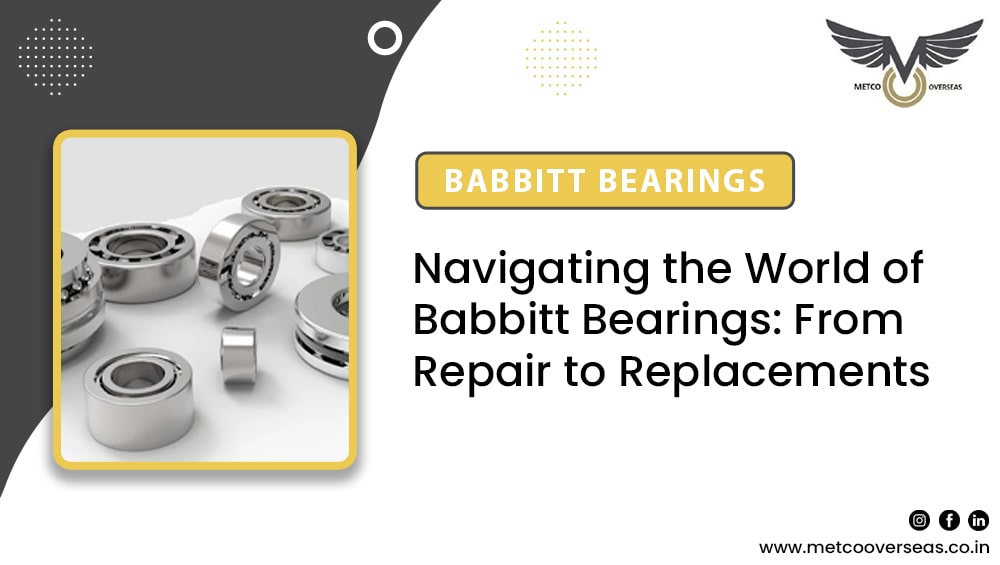In the area of business equipment, Babbitt bearings play a crucial function in ensuring the clean operation of various mechanical structures. From heavy-responsibility manufacturing systems to delicate precision instruments, Babbitt bearings are imperative to the capability and sturdiness of countless machines. Understanding Babbitt bearings, their production, repair, and alternative methods, is important for preserving the performance and reliability of business operations.
Understanding Babbitt Bearings
Babbitt bearings, also known as Babbitt metallic bearings, are named after Isaac Babbitt, who invented the Babbitt metal alloy in 1839. These bearings are designed to provide a long-lasting, low-friction interface between transferring parts, minimizing wear and tear and enhancing the lifespan of machinery. Babbitt steel, generally composed of tin, copper, and antimony, is prized for its brilliant conformability, embeddability, and fatigue resistance.
Types of Babbitt Bearings
Babbitt bearings are available in various bureaucracies, each applicable to specific programs. Some of the most common sorts include:
Babbitt Sleeve Bearings: These are cylindrical and utilized in programs where radial loads are commonplace. Babbitt sleeve bearings provide an easy, regular floor for shafts to rotate within, decreasing friction and putting on.
Babbitt Journal Bearings: Similar to sleeve bearings, journal bearings aid radial masses but are designed specifically for high-speed applications. These bearings are critical in generators, compressors, and electric cars.
Babbitt Thrust Bearings: Thrust bearings are designed to deal with axial masses, stopping the shaft from moving along its axis. These bearings are crucial in packages like propeller shafts and vertical turbine pumps.
Babbitt Bearing Manufacturing
The process of Babbitt bearing manufacturing entails numerous steps to ensure the final product meets the required specifications and performance requirements. The key levels include:
Material Selection: The first step in Babbitt bearing manufacturing is selecting the proper Babbitt alloy. Different applications may also require specific compositions of Babbitt steel to achieve the favored stability of power, flexibility, and wear resistance.
Casting: Once the Babbitt alloy is prepared, it is cast into molds to form the bearing shells. Precision in casting is crucial to make certain the bearings have suitable dimensions and structural integrity.
Machining: After casting, the bearing shells go through machining to achieve the very last dimensions and surface finish. This method can also include boring, honing, and grinding to make certain the bearings fit flawlessly within their housings.
Inspection: Quality management is an important thing of Babbitt-bearing manufacturing. Bearings are inspected for dimensional accuracy, surface end, and fabric integrity to make certain they meet the required requirements.
Babbitt Bearing Repair
Over time, even the maximum properly-made Babbitt bearings can wear out or grow to be broken. Babbitt bearing restoration is a price-powerful opportunity to alternatively, restore the bearings to their authentic situation and extend their career life. The restoration process typically entails the subsequent steps:
Assessment: The first step in Babbitt bearing repair is assessing the extent of the damage. This entails inspecting the bearings for signs of damage, scoring, or other defects that could impact their performance.
Cleaning: Once the bearings are assessed, they may be very well cleaned to remove any dust, grease, or contaminants that might interfere with the repair.
Recasting: The damaged Babbitt material is removed, and new Babbitt metal is forged onto the bearing shells. This manner calls for precision to ensure the new material bonds correctly and achieves the desired thickness.
Machining: After recasting, the bearings undergo machining to restore their authentic dimensions and floor end. This step is important to make certain the repaired bearings in shape successfully and function as intended.
Final Inspection: The repaired bearings are subjected to a very last inspection to affirm their excellent and overall performance. This includes checking for dimensional accuracy, surface finish, and material integrity.
Babbitt Bearing Replacement
In a few cases, Babbitt bearing replacement can be essential if the bearings are too broken or worn to be repaired. Replacing Babbitt bearings entails several steps to ensure the new bearings meet the required specifications and overall performance standards:
Disassembly: The first step in Babbitt bearing replacement is disassembling the machinery to get the right of entry to the worn or broken bearings. This manner calls for careful handling to keep away from unfavorable other additives.
Removal: The worn or damaged bearings are removed from their housings. This may also involve reducing or heating the bearings to facilitate their elimination.
Installation: New Babbitt bearings are established in the vicinity of the old ones. This procedure calls for precision to ensure the bearings suit effectively and are properly aligned.
Reassembly: After putting in the brand-new bearings, the equipment is reassembled, and all additives are secured in the vicinity.
Testing: The final step in Babbitt bearing replacement is trying out the equipment to make certain the brand-new bearings are functioning correctly. This may additionally contain strolling the machinery below load to confirm its performance.
The Role of Babbitting Services
Babbitting services are important for preserving and repairing Babbitt bearings. These offerings embody various sports, from habitual upkeep to emergency maintenance, ensuring that equipment operates easily and correctly. Key Babbitting offerings include:
Routine Maintenance: Regular preservation is crucial for extending the lifespan of Babbitt bearings. Babbitting offerings offer habitual inspections, lubrication, and changes to hold bearings in top-quality circumstances.
Emergency Repairs: In the event of a bearing failure, Babbitting offerings can offer emergency upkeep to reduce downtime and restore equipment to operational status. This involves quickly assessing the harm, recasting new Babbitt metallic, and machining the bearings to the specified specs.
Consultation and Support: Babbitting offerings also provide sessions and guides for deciding on the proper bearings for specific packages. This consists of recommendations on fabric selection, layout issues, and installation strategies.
Advantages of Babbitt Bearings
Babbitt bearings provide numerous benefits that lead them to a preferred choice for many commercial applications:
Low Friction: Babbitt steel provides a low-friction floor, lowering put and tear on moving components and enhancing the performance of machinery.
Excellent Conformability: Babbitt bearings can comply with minor misalignments and surface imperfections, ensuring easy operation even under challenging situations.
High Load Capacity: Babbitt steel has first-rate load-bearing properties, making it appropriate for heavy-obligation packages.
Fatigue Resistance: Babbitt bearings can withstand repeated loading and unloading cycles without experiencing huge put-on or fatigue.
Embeddability: Babbitt steel can embed small particles of debris, preventing harm to the bearing floor and increasing the lifespan of the bearing.
Applications of Babbitt Bearings
Babbitt bearings are used in a wide range of commercial programs, along with:
Power Generation: Babbitt bearings are critical in mills, turbines, and different electricity generation equipment, providing dependable assistance for excessive-pace rotating additives.
Manufacturing: In manufacturing devices, Babbitt bearings reduce friction and put on, improving the efficiency and lifespan of machines such as compressors, pumps, and cars.
Marine: Marine applications, along with propeller shafts and rudder bearings, depend upon Babbitt bearings for their sturdiness and resistance to corrosion.
Automotive: Babbitt bearings are used in engines and different car additives to lessen friction and wear, improving performance and toughness.
Aerospace: In aerospace applications, Babbitt bearings offer dependable support for high-speed rotating components, ensuring the clean operation of engines and other critical systems.
Conclusion
Navigating the sector of Babbitt bearings requires expertise in their types, production strategies, restoration techniques, and alternative tactics. Whether coping with Babbitt sleeve bearings, Babbitt journal bearings, or Babbitt thrust bearings, knowing when to repair or update them is vital for retaining the performance and reliability of business machinery. Babbitting offerings play an important position in ensuring that Babbitt bearings are maintained, repaired, and replaced efficiently, supplying the assistance needed to preserve machinery strolling smoothly.
Metco Overseas, as a main dealer of flanges, is aware of the significance of imparting stable and reliable connections for various industrial applications. With a group of pretty qualified engineers, Metco Overseas guarantees that the proper cloth flanges are furnished to satisfy the specific needs of various industries, enhancing both safety and applicability. Whether it’s Babbitt bearings or commercial flanges, the right desire for substances and offerings can considerably affect the productiveness and longevity of industrial operations.

